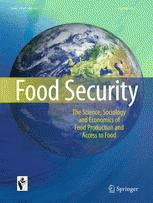Climate resilient cropping systems are required to adapt to the increasing threats of climate change projected for Southern Africa and to better manage current climate variability. Conservation agriculture (CA) has been proposed among technologies that are climate-smart. For a cropping system to be labelled “climate-smart” it has to deliver three benefits: a) adapt to the effects of climate and be of increased resilience; b) mitigate climate effects by sequestering carbon (C) and reducing greenhouse gas emissions (GHG); and c) sustainably increase productivity and income. Research on smallholder farms from Southern Africa was analysed to assess if CA can deliver on the three principles of climate-smart agriculture. Results from Southern Africa showed that CA systems have a positive effect on adaptation and productivity, but its mitigation potential lags far behind expectations. CA systems maintain higher infiltration rates and conserve soil moisture, which helps to overcome seasonal dry-spells. Increased productivity and profitability were recorded although a lag period of 2–5 cropping seasons is common until yield benefits become significant. Immediate economic benefits such as reduced labour requirements in some systems will make CA more attractive in the short term to farmers who cannot afford to wait for several seasons until yield benefits accrue. The available data summarizing the effects of CA on soil organic C (SOC) and reductions in greenhouse gases, are often contradictory and depend a great deal on the agro-ecological environment and the available biomass for surface residue retention. There is an urgent need for more research to better quantify the mitigation effects, as the current data are scanty. Possible co-interventions such as improved intercropping/relay cropping systems, agroforestry and other tree-based systems may improve delivery of mitigation benefits and need further exploration.
DOI:
https://doi.org/10.1007/s12571-017-0665-3
Altmetric score:
Dimensions Citation Count:

Publication year
2017
Authors
Thierfelder, C.; Chivenge, P.; Mupangwa, W.; Rosenstock, T.S.; Lamanna, C.; Eyre, J.X.
Language
English
Keywords
conservation agriculture, cropping systems, agroforestry, biomass, climate change, mitigation, soil organic carbon, soil






















